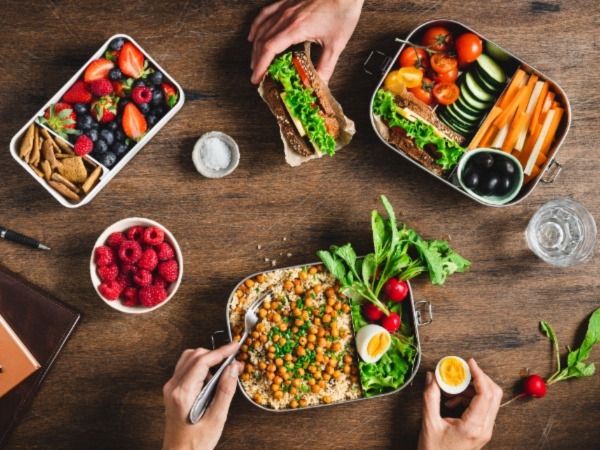Amy: “Remember last weekend when my parents were here?”
Adam: “Yeah.” He was looking at his computer, distracted.
Amy: “We were joking about living trash free for a whole year? I think I want to do it.”

From that conversation, the Green Garbage Project was born. Over the course of 52 weeks, Amy and Adam Korst endeavored to produce no waste destined for the landfill.
In the end, they were left with a shoebox of materials that they could not reuse or recycle. It weighed about three pounds, a little less than the four-plus pounds of waste the average American throws away EACH DAY for landfill disposal. The Korsts were surprised to learn that it wasn’t that difficult and the benefits were many. They lived more simply, spent less money, ate healthier, and were generally happier. In addition, they were helping preserve natural resources and reduce the harmful effects of resource extraction, manufacturing, and transportation on the environment.
In her book, The Zero-Waste Lifestyle: Live Well by Throwing Away Less, Amy Korst shares firsthand knowledge gained from her zero-waste lifestyle. She also draws on the experience of five others, some of whom have been doing this for decades. So, rest assured, this isn’t as rare as it sounds, nor is it as difficult. It is both an interesting narrative and an educational reference. Whether you read it cover to cover or keep it on the shelf as a do-it-yourself resource, you won’t be disappointed.
What’s in the book
The first five chapters cover the big picture of waste in America, as well as hands-on advice about reducing your consumption, improving your recycling, and composting your organic waste. The author advises you to get to know people where you shop. At a grocery, she’ll ask to speak to the manager and, in her words, “I introduce myself, shake their hand, and explain my lifestyle. Then I ask that person whether I can bring my own containers to the store to buy fresh, bulk, or deli products.”
She goes on to offer some sample dialogue to help the reader through the process. Then she offers this helpful tidbit: “I make sure I note the manager’s name, so if I encounter a skeptical employee when I get back to the meat counter, I can say, ‘Oh, I checked with Carli, the store manager, and she said it was okay.”
Korst encourages the reader to, “Be proud! You’re making a difference. How many people can say that?” She suggests you lead by example: “Those around you see your choices and may choose to emulate them. Even if they don’t, they may choose to accommodate your choices, thereby using their consumer purchasing power to buy green products.” As you research what packaging items are made of and whether or not they are recyclable in your area, she encourages you to call the manufacturers’ toll-free numbers and express your interest in recyclable packaging.
Helpful Tools
Helpful tools are provided, such as a master shopping checklist to help evaluate what you buy regularly and whether the packaging associated with those items is recyclable. She also advocates that you maintain On-the-Go Kits for the car and work. The travel mug in the car kit reduces her use of disposable coffee cups, and the reusable plastic containers reduce her use of Styrofoam containers when taking leftovers home from a restaurant.
The use of these kits and reusable items like those used for the packed lunches pictured here provides her with more opportunities to share her story. When someone brings treats to work or there is an office pitch-in, Korst attends these events “with my plastic plate and utensils in hand. This often becomes a talking point among my coworkers, which is great because it helps raise awareness even more.”
In later chapters, she provides detailed instructions on reducing waste in every room of the house, as well as specific advice for kids, travel, work, holidays, and special occasions. Throughout, Korst divides her guidance into beginner, moderate, and advanced levels. Every reader will find something useful here.
Once their systems were in place, Amy and Adam found no difficulty maintaining their efforts. With this book, you won’t have to develop those systems from scratch. Amy and Adam have done that part for you. All you have to do is get started on living a lifestyle that aims for as little waste as possible.
For another book with more ideas, check out A page a day to keep waste away.
Image credit: alvarez | E+ | Getty Images
